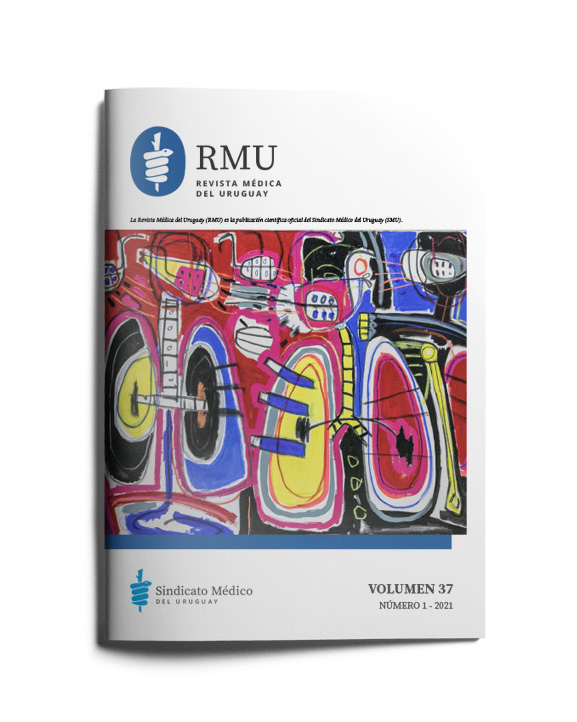Pancreatic cancer, a quick and silent action enemy and a limitation to life hope
Abstract
It is a great honor for me to contact you after having read the article "Pancreatic cancer: epidemiology of its poor prognosis" in this journal, published in 2017 by Dr. Patricia Alejandra López Penza, assistant to the Hospital Surgical Clinic Maciel. In this study, emphasis is placed on the clinical presentation of patients with pancreatic cancer (PC) at the time of diagnosis, just as the latter is usually performed in advanced stages of the evolution of the cancer, making it impossible to offer the patient surgical resection treatment which is the only one of a curative nature, having to apply palliative options in those cases, even then it is evident that there is a low survival rate for them(1).
Knowing this oncological pathology is of high importance due to various factors, such as its incidence and position within the list of most frequent and deadly cancers, where it ranks as the eleventh most common cancer and the seventh highest cause of cancer mortality. global level, according to GLOBOCAN 2018 estimates(2). Another aspect is the challenge of its diagnosis, which is usually late; This is mainly determined by the location of the pancreas, the retroperitoneum, which indicates that its initial growth is silent and its clinical manifestations develop in advanced stages(3,4). In addition to having a poor prognosis: generally after diagnosis only 24% of people survive one year and 9% live five years(2).
The descriptive observational study by López P. et al.(1) addresses some of the aspects of PC that explain the reasons why it has such a negative prognosis, which is why I emphasize its relevance within medical research by encouraging deepening of the determinants of the natural history of this type of cancer. In the article, the results of the follow-up that were carried out on the 30 patients that made up the population in a clear and precise way are shown, thus contributing to the knowledge of the reality that exists in their country.
In the same way, I would like to express to you that from my point of view, it would have been advantageous to include in the introduction a greater number of definitions of the terms used so that the reader can better locate themselves within the context, since this type of scientific production is It is available to anyone who has internet access and wishes to consult the magazine. Within this audience are both students who are still in the learning process, as well as the general population. An example would be to describe what is called unresectable PC, which refers to when the existence of distant metastases, non-regional lymphadenopathy or tumor vascular involvement is confirmed through physical or imaging examination(5).
Finally, within the discussion, the data obtained from the patients were contrasted with the statistics at the international level; It would be more informative and broaden the panorama to also be able to compare them with national studies to confirm whether these results could complement or be cited to generalize the reality of the current evolution of PC in the country, since by itself and by having a small population it exposes the situation at the Maciel Hospital.
In summary, this study shows us how in the majority of patients with PC the disease becomes evident in stages where medical intervention cannot help them avoid its rapid progress or provide them with a good quality of life, and also relapses in the importance of look for new screening methods that allow an earlier diagnosis.
References
2) Rawla P, Sunkara T, Gaduputi V. Epidemiology of pancreatic cancer: global trends, etiology and risk factors. World J Oncol 2019; 10(1):10-27. doi: 10.14740/wjon1166 Disponible en: https://www.wjon.org/index.php/WJON/article/view/1166 [Consulta: 16 febrero 2020].
3) Mcguigan A, Paul K, Turkington R, Jones C, Coleman H. Pancreatic cancer: a review of clinical diagnosis, epidemiology, treatment and outcomes. World J Oncol 2018; 24(43):4846-61. doi: 10.3748 / wjg.v24.i43.4846. Disponible en: https://pubmed.ncbi.nlm.nih.gov/30487695/ [Consulta: 24 marzo 2020].
4) Medina Perez V, Fonseca Labrada A, Alsina Tul L, Lamadrid Garcia J, Carvajal Aballe M, Fong Baltar Á, et al. Caracterización de pacientes con adenocarcinoma de páncreas. Rev Cub Oncol 2020; 18(2):e-35. Disponible en: http://revoncologia.sld.cu/index.php/onc/article/view/35 [Consulta: 15 setiembre 2020].
5) Montejo Gañán I, Ángel Ríos LF, Sarría Octavio de Toledo L, Martínez Mombila ME, Ros Mendoza LH. Estadificación mediante tomografía computarizada del carcinoma de páncreas. Radiología 2018; 60(1):10-23. doi: 10.1016/j.rx. 2017.08.004 Disponible en: https://www.sciencedirect.com/science/article/abs/pii/S0033833817301431? via%3Dihub [Consulta: 12 abril 2020].

This work is licensed under a Creative Commons Attribution-NonCommercial 4.0 International License.













